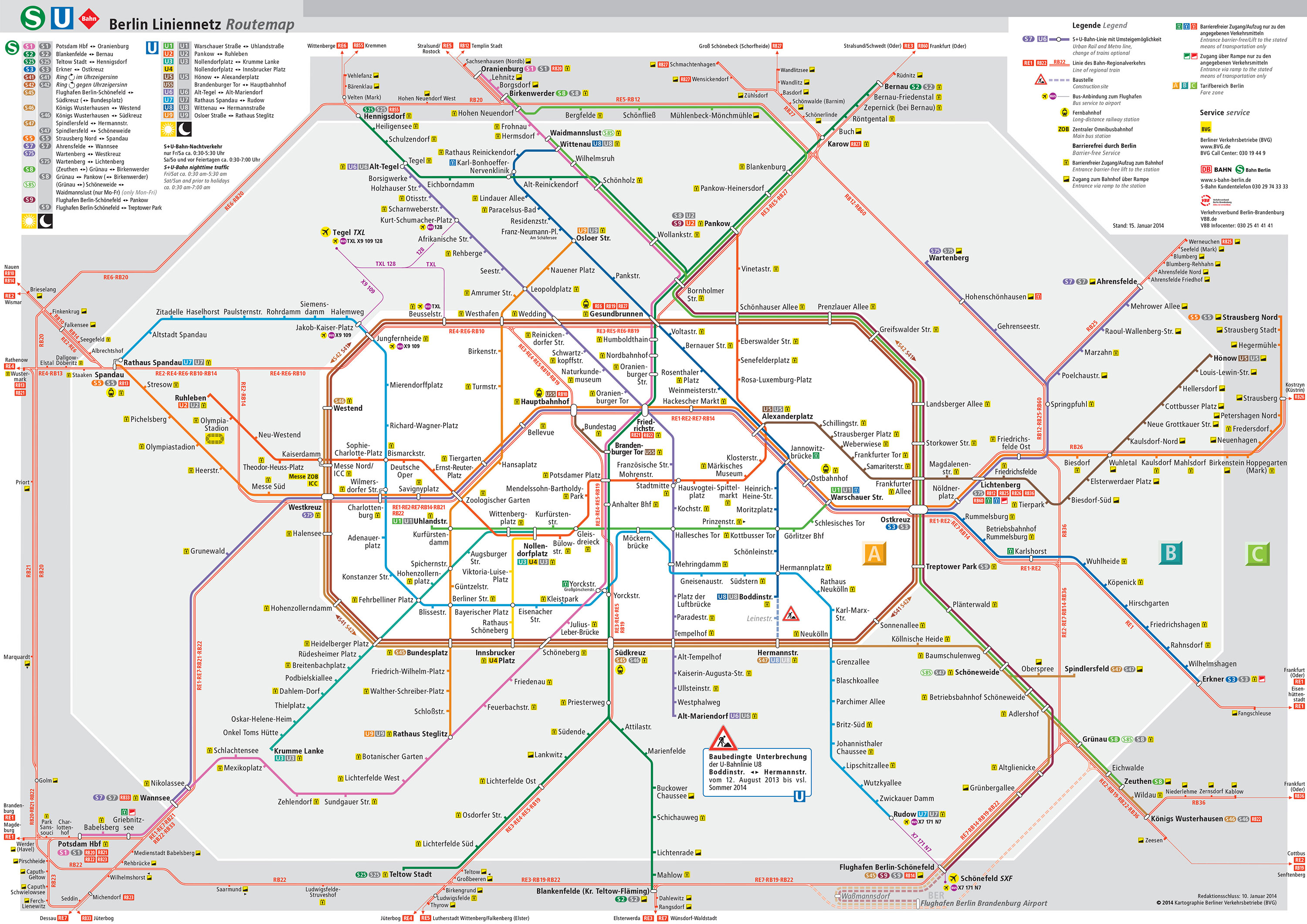44 North
Senior Member
U-Bahn is basically your standard subway. In Munich it runs underground most of the time, but some lines like the U6 towards Garching pop aboveground near Fröttmanning when the population density is too low to justify tunneling.
S-Bahn means "Schnell" Bahn or fast train and is similar to Parisian RER. It's like GO but integrated into the within city network. So in the downtown, S-Bahn is also underground. Aboveground it's definitely separated from traffic and its either LRT or heavy-rail depending on the city. I'm a little fuzzy on that last point since it often seems to be somewhere in between what I think of as LRT and heavy rail. I wonder if that's because there's no freight on these lines that it doesn't have to meet normal heavy rail standards. S-Bahn is great for getting around in the city and also to nearby suburbs.
Two other modes are used in German cities:
One thing that's great is that the U-Bahn, S-Bahn, and other local transport are all integrated within a single unified fare-by-distance model. It's all PoP so there are no faregates and usually no ticket booths in most stations.
- Straßenbahn: is a streetcar. These are similar to our streetcars, except they tend to operate in their own ROW with highly-effective TSP. Stops are also typically spaced more widely than here. Of course, there's also busses.
- Regional rail: This picks up where the S-Bahn leaves off. Trips to neighboring cities. Not for nationwide trips though.
And don't forget that oftentimes German cities have Stadtbahns, which is similar to the Crosstown in that it's a tram in the outer areas but underground in the downtown. It seems depending on the city these lines can be considered part of the U-Bahn netwok, or the Tram (strassenbahn) network - though I believe there's been attempts to make it its own class (e.g U-Stadtbahn).
Last edited:





